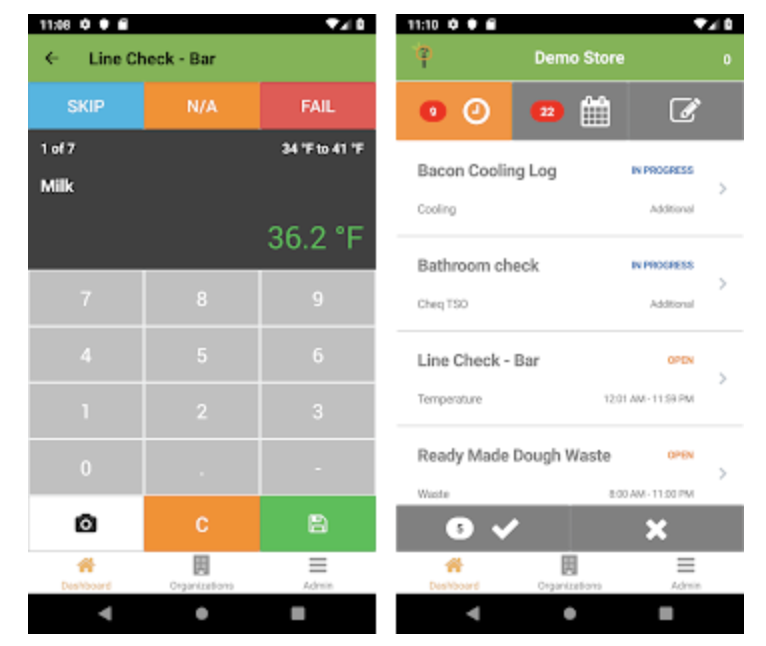When the recession hit in 2008, an unemployed Roy Choi parked his humble Korean taco truck in front of a Los Angeles nightclub and launched a food phenomenon that would be known today as the ubiquitous “food truck.”
A decade on, there are over 4,000 food trucks across the country in an industry worth $1.2 billion, according to The Economist.
It’s easy to see why entrepreneurs are opening food trucks in droves, when you consider that food trucks have minimal overhead costs, require fewer employees and can adapt to changing customer demands by updating menus, locations or opening hours.
However, food trucks face a unique set of challenges, such as operating within limited spaces, finding effective locations and attracting new and returning customers.
To succeed in the mobile food business, food truck owners must adopt the right technologies to address those unique challenges in order to attract new and returning customers and ensure a thriving food truck business.
Below, we’ll take a look at key technologies most beneficial to food truck owners who are just starting their food truck business.
Advanced Point of Sale (POS) Systems Tailored for food trucks, modern POS systems offer seamless order processing, inventory tracking, and sales analysis, all from a compact, user-friendly interface.

Benefits of Mobile POS Software
Speed and ease of use: The food truck industry demands speed and hustle. Manually taking orders with pen and paper may have worked previously, but customers waiting in line will expect their food to come as they requested—and quickly.
Because it’s mobile, you can take orders outside your truck too. The faster food truck owners can take orders, the more quickly they can deliver food efficiently to a steady stream of customers.
Efficient use of space: Employees often work in confined spaces of less than 8 feet wide by 20 feet long. Mobile POS systems make it easy for customers to swipe their cards through a device quickly. More importantly, these systems often take up less space than clunky cash registers, which is a great benefit for food trucks operating out of limited spaces.
Engage customers with upselling features: Beyond taking orders, most mobile POS systems also have a simple built-in tipping process to encourage more tips for your business. Other upselling features also include the ability to get customers’ contact details for email and SMS marketing in order to boost repeat visits and customer loyalty.
Access to sales reports anywhere: Getting the right data enables you to make informed decisions about your business. Even if you’re not on location, you still have the ability to pull up sales reports and other analytics on the cloud to help you make decisions about your business wherever you are.
3 . Food Safety Systems: Automate Tasks and Generate Reports
 Automatically track temperatures and check off online cleaning lists (Source)
Automatically track temperatures and check off online cleaning lists (Source)
THE CHALLENGE: For food truck owners, it takes a lot more to ensure that food is safe when operating in a confined space.
A truck owner has to think about how to get access to clean water, filling up a water tank, disposing waste water, finding a power source and ensuring that food is kept at the right temperature—all within a limited space.
More specific to food temperatures: Maintaining the right temperature can pose a major challenge for mobile food businesses. Upon arrival of the food, food truck operators need to ensure that no food is above 41 degrees Fahrenheit and to store it immediately, or disposing of it immediately if it’s above the acceptable temperature.
WHY? Food temperatures above 41 degrees Fahrenheit have the most rapid bacteria growth—especially between 70 and 125 degrees Fahrenheit.
Food trucks are also more likely than their brick and mortar counterparts to be subjected to random, “pop-in” FDA checks at fairs and festivals. Failing a visit from a health inspector can keep your business shut for a few days, or worse, lead to permanent closure.
THE SOLUTION: Food safety apps can be introduced to your food truck to automate laborious and manual tasks that you’d otherwise have limited time for in your hectic schedule. Some of these include calibration of thermometers, checking off cleaning and training lists as well as generating temperature and consistency logs for quality control inspections.
What It’s Like Working On A New York City Food Truck
FAQ
How much does technology cost in a food truck?
How do food trucks power their equipment?
What kind of social media are food trucks using?
